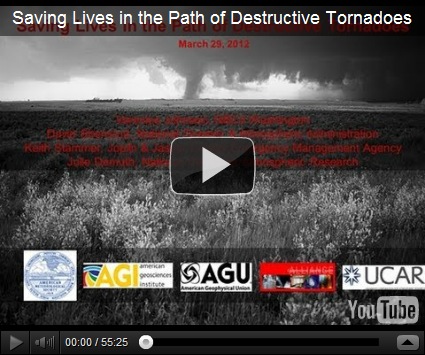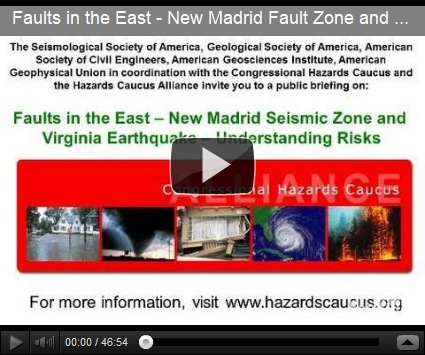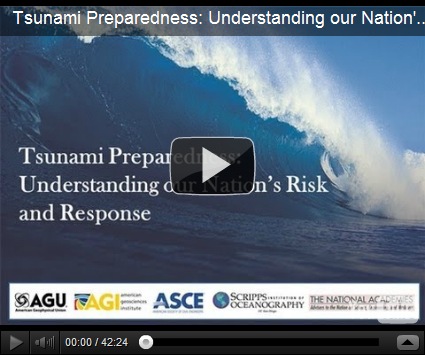May 22, 2011, a Level 5 tornado Joplin, Missouri
# 6318
While tabloid newspapers and apocalyptic websites seem obsessed with 2012 Mayan prophecies and extinction level events, genuine emergency managers, scientists, and policy makers are focused on far more likely disasters.
Earthquakes, tornadoes, floods, hurricanes, pandemics, and even tsunamis.
Disasters that not only happen with some regularity, but that are actually - with a bit of preparation - survivable.
Recently the Congressional Hazards Caucus sponsored three public briefings in Washington D.C. focusing on Earthquakes, Tornadoes, and Tsunamis.
Videos of all three briefing are available online, and they provide a fascinating look at not only the potential for disasters here in the United States, but at some of the steps that are being taken to reduce or mitigate their effects.
First stop, a Public Briefing on Saving Lives in the Path of Destructive Tornadoes, held on March 29th at the Rayburn House Office Building.
From the Invitation Flyer PDF.
Speakers
Veronica Johnson, Broadcast Meteorologist, NBC4 Washington (Moderator)
Dr. David Stensrud, Chief, Forecast Research and Development Division, National Severe Storms Laboratory
Keith Stammer, Director, Emergency Management Division, Joplin/Jasper County, Missouri
Julie Demuth, Scientist, Societal Impacts Program, National Center for Atmospheric Research
Next, a public briefing on Faults in the East - New Madrid Seismic Zone and Recent Virginia Earthquake - Understanding Risks, again held on March 29 at the Rayburn House Office Building.
From the Invitation Flyer PDF.
Moderator:
David B. Spears, Virginia State Geologist, Virginia Department of Mines, Minerals and Energy, Charlottesville, Virginia
Speakers:
J. Wright Horton, Jr., U.S. Geological Survey, National Center, Reston, Virginia
Learning from the 2011 Virginia Earthquake (3 Mb PDF)
Charles A. Langston, Director of the Center for Earthquake Research and Information, University of Memphis, Memphis, Tennessee
Understanding Earthquakes in the New Madrid Seismic Zone (4.6 Mb PDF)
James M. Wilkinson, Jr., Executive Director of the Central United States Earthquake Consortium, Memphis, Tennessee
Planning, Preparing, and Responding to Earthquake Risks in the Central United States (1.8 Mb PDF)
And for our last stop, a public briefing on Tsunami Preparedness: Understanding our Nation's Risk and Response, this time held March 21 at the Rayburn Office Building.
From the Invitation Flyer PDF.
Speakers:
Eddie Bernard, Scientist Emeritus, Pacific Marine Environmental Laboratory, National Oceanic and Atmospheric Administration
Presentation: Local Tsunami Warnings: Can the U.S. Do It? (PDF)
John Orcutt, Distinguished Professor of Geophysics at Scripps Institution of Oceanography
Presentation: Tsunami Warning and Preparedness: An Assessment of the U.S. Tsunami Program and Tsunami Preparedness (PDF)
John Schelling, Earthquake/Tsunami Program Manager for Washington State Emergency Management Division
Presentation: State & National Tsunami Hazard Mitigation Programs: Increasing our Nation's Overall Resilience to Tsunamis (PDF)
These are sober presentations by serious scientists, and the events they talk of are – over time – pretty much inevitable.
The unknowns are when, exactly where, and how bad they will be.
Which is why emergency managers around the country urge individual, family, and business preparedness, telling everyone to GET A KIT, MAKE A PLAN, and BE INFORMED.
Credit Ready.gov
Everyone needs an appropriate disaster plan, just as everyone should have a good first aid kit, a `bug-out bag’, and sufficient emergency supplies to last a bare minimum of 72 hours.
For more on disaster preparedness, I would invite you to visit Ready.gov or revisit these blogs:
In An Emergency, Who Has Your Back?




